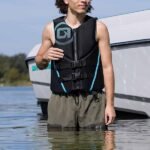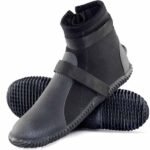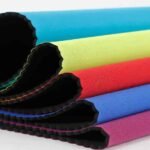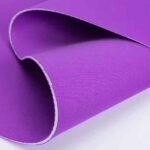It’s that time of year again: the days are getting longer, the sun’s getting warmer, but the water still carries a chill. You’re eager to hit the waves, but your heavy winter wetsuit is overkill, and without it, the water’s too brisk for comfort. Enter the spring wetsuit—a solution designed for those in-between times, when the air feels like summer but the ocean hasn’t quite caught up. But what exactly is a spring wetsuit?
What Is A Spring Wetsuit?
A spring wetsuit is a type of wetsuit tailored for mild water conditions. Typically made from thinner neoprene, spring wetsuits balance warmth and flexibility, offering just enough insulation to keep you comfortable without restricting your movement. Unlike full wetsuits that cover the entire body, spring suits often feature shorter sleeves or legs, making them a lighter, more breathable option. Whether you’re surfing, kayaking, or paddleboarding in spring or early summer waters, a spring wetsuit can keep you warm, mobile, and ready for action.
Which Water Temperatures Are Ideal For A Spring Wetsuit?
Spring wetsuits are designed for moderate water conditions. They shine when it’s too cold for just a rash guard but too warm for a full winter wetsuit. This makes them an ideal choice for transitional seasons and specific temperature ranges.
Spring wetsuits perform best in water temperatures between 65°F and 75°F (18°C to 24°C). At these temperatures, a spring suit provides enough insulation to keep you warm without causing overheating. You can think of it as the perfect compromise—a suit that’s not too thick and not too thin, allowing you to enjoy longer sessions in the water without feeling restricted or chilly.
Factors That Influence the Ideal Water Temperature:
- Climate Conditions: In many coastal areas, spring wetsuits are ideal during the late spring, early summer, or early autumn, when water temperatures hover around the mid-60s to mid-70s.
- Wind and Air Temperature: On breezy days, even slightly warmer water can feel cooler, making a spring wetsuit more appealing.
- Your Activity Level: If you’re constantly moving—paddling, swimming, or surfing—you’ll stay warmer and can comfortably use a spring wetsuit at the lower end of the temperature range.
By understanding the water conditions you’re likely to encounter, you can better decide if a spring wetsuit is right for your specific environment.
What Is The Difference Between A Full Suit And A Spring Suit?
At first glance, both full suits and spring suits look similar. They’re made of neoprene, provide insulation, and protect you from the elements. However, the key differences come down to the amount of coverage, the thickness of the material, and the conditions each is designed to handle.
Full wetsuits cover your entire body, including long sleeves and full-length legs. They’re built for cold water conditions, offering maximum insulation and protection. Typically, full suits come in a range of thicknesses, from 3/2mm (ideal for cooler spring and fall waters) to 5/4mm or thicker (for winter surf sessions).
Spring wetsuits, on the other hand, are designed for milder conditions. They often have shorter sleeves, shorter legs, or both. This makes them lighter and more flexible, so you can move more freely in the water. The neoprene in a spring suit is also thinner, usually between 1.5mm and 2mm, which offers moderate warmth without bulk.
When to Choose a Full Suit:
- Cold Waters: When water temperatures fall below 65°F (18°C), a full suit becomes essential.
- Extended Sessions: If you’re planning a long day in the water, the extra insulation helps maintain body heat.
- Winter Conditions: For late autumn, winter, or early spring, a full suit offers the protection you need.
When to Choose a Spring Suit:
- Mild Temperatures: When the water is cool but not freezing, a spring suit provides just enough warmth.
- Mobility Needs: Shorter sleeves and legs mean less material to restrict your paddling, kicking, or swimming.
- Warmer Air Temps: On sunny days, a spring suit keeps you comfortable without overheating.
Ultimately, the choice between a full suit and a spring suit depends on the conditions you’ll face, how long you’ll be in the water, and your personal comfort level.
How Does a Spring Wetsuit Enhance Performance and Comfort?
Performance in the water isn’t just about skill—it’s about gear that lets you move freely, stay comfortable, and maintain energy. Spring wetsuits are designed to do just that by balancing insulation with flexibility.
A spring wetsuit enhances performance by allowing a full range of motion while providing enough insulation to keep muscles warm. This helps reduce fatigue and improves overall endurance. The thinner neoprene and shorter sleeves or legs mean you won’t feel as restricted, making it easier to paddle, kick, or perform intricate maneuvers on your surfboard. Whether you’re an experienced surfer or a beginner paddleboarder, the added comfort and mobility can help you stay in the water longer and enjoy the experience more.
Key Features That Improve Performance:
- Flexibility: Modern neoprene materials are incredibly stretchy, allowing for unrestricted movement.
- Lightweight Design: Less material means less weight, which makes every movement feel more natural.
- Quick Drying: After a session, a spring wetsuit dries faster than a full suit, meaning it’s ready for your next outing sooner.
By improving comfort and movement, spring wetsuits help you make the most of every moment on the water.
What Water Sports Are Spring Wetsuits Suitable for?
Spring wetsuits aren’t just for surfers. Their versatility makes them a great choice for a wide range of water sports and activities.
Spring wetsuits are well-suited for surfing, stand-up paddleboarding, kayaking, windsurfing, and even snorkeling in mild water temperatures. The lighter, more flexible design makes it easier to perform the motions required for these activities. Whether you’re paddling through a calm lake, riding waves along the coast, or navigating windy conditions, a spring wetsuit provides the comfort and protection you need.
Examples of Water Sports That Benefit from a Spring Suit:
- Surfing: Ideal for catching waves on warmer days without overheating.
- Stand-Up Paddleboarding: Offers insulation while allowing free movement for paddling and balancing.
- Kayaking: Protects against splashes and wind chill without feeling bulky.
- Windsurfing: Keeps you comfortable during intense, windy conditions.
- Snorkeling: Provides mild insulation for longer snorkel sessions in cooler waters.
No matter the activity, spring wetsuits are versatile and functional, making them a popular choice for many water enthusiasts.
Are Spring Suits Worth It?
Investing in a spring wetsuit may feel like an unnecessary expense at first—especially if you already own a full suit. However, the benefits of having a dedicated spring suit become clear once you start using one.
Spring suits are worth it if you regularly engage in water activities during transitional seasons. They allow you to enjoy the water comfortably without the bulk and heat retention of a full suit. This means you can stay in the water longer, perform better, and have a more enjoyable experience overall.
Reasons to Consider a Spring Suit:
- Greater Comfort in Mild Waters: If you’re often in water that’s too warm for a full suit but too cool to go without insulation, a spring suit bridges the gap perfectly.
- Improved Mobility: The lighter, more flexible design means you can move more freely, which can enhance your performance and reduce fatigue.
- Convenience and Durability: Spring suits are easier to put on and take off, and they dry quickly, making them more convenient for frequent use.
In the long run, a spring suit can save you from discomfort and help you make the most of every water session. For many water sports enthusiasts, having a dedicated spring wetsuit is a worthwhile addition to their gear collection.
Conclusion
A spring wetsuit is a practical and versatile choice for anyone who enjoys water sports in mild conditions. It provides a comfortable middle ground, offering the insulation you need without the bulk and restriction of a full wetsuit. If you’re someone who frequently surfs, paddles, or swims during transitional seasons, a spring wetsuit can make a significant difference in your experience.
At Szoneier, we specialize in manufacturing high-quality neoprene wetsuits, including spring wetsuits tailored to your needs. With years of expertise, top-notch materials, and customization options, we can help you find the perfect wetsuit solution. Reach out to us today to learn more and see how we can elevate your next water adventure.












